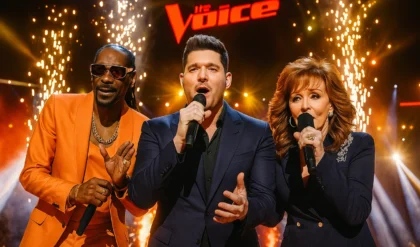Elon Musk, the visionary behind Tesla, SpaceX, and xAI, has once again captured the world’s attention with a groundbreaking announcement: Tesla is on the verge of launching its most advanced self-driving system to date, a technology that promises to redefine autonomous driving. According to recent reports and Musk’s own statements on X, this new system will allow drivers to simply voice their destination, and the car will navigate autonomously, requiring no human intervention. Set to debut in Austin, Texas, by the end of June 2025, this innovation marks a significant milestone in Tesla’s long-standing mission to revolutionize transportation. Here’s a closer look at what this launch means, the technology behind it, the challenges it faces, and why it’s generating global buzz.
A Leap Forward in Autonomous Driving
Tesla’s upcoming self-driving system, part of its much-anticipated robotaxi service, is poised to be a game-changer. Musk revealed on X that the company has been testing driverless Model Y vehicles in Austin for several days, with no safety drivers on board and no incidents reported (CNBC, June 3, 2025). The system, expected to roll out by June 12, 2025, will allow users to issue voice commands—such as “Take me to the airport”—and the car will handle the rest, navigating public roads autonomously (Bloomberg, May 29, 2025). This feature builds on Tesla’s Full Self-Driving (FSD) software but takes it to a new level by eliminating the need for human supervision, a leap from the current FSD Supervised mode that still requires driver attention.
Musk has long touted autonomy as the future of Tesla, famously stating during an April 2024 earnings call, “The future of the company is fundamentally based on large-scale autonomous cars” (Newsweek, May 31, 2025). The new system aims to deliver on that vision, integrating advanced AI with Tesla’s camera-only approach to create a seamless, voice-activated driving experience. Unlike competitors like Waymo, which rely on lidar and radar, Tesla’s system uses neural networks trained on billions of miles of driving data, enabling it to interpret and respond to complex road scenarios (Business Insider, May 31, 2025). Musk claims this “generalized solution” to self-driving is superior, as it mimics human decision-making more closely (Business Insider, May 17, 2025).
The voice command feature is particularly noteworthy. By allowing users to interact with their vehicles as they would a virtual assistant, Tesla is making autonomous driving more intuitive and accessible. Imagine stepping into a Tesla, saying, “Drive to downtown Austin,” and relaxing as the car navigates traffic, obeys traffic laws, and avoids obstacles—all without a steering wheel touch. Musk’s ambition is clear: to make driving as effortless as hailing a ride, but with the added convenience of owning a personal, self-driving vehicle (InsideEVs, May 30, 2025).
The Rollout: Austin as the Testing Ground
Austin, Texas, where Tesla is headquartered, has been chosen as the launch site for this revolutionary system, with plans to expand to other cities like California later in the year (TechCrunch, May 21, 2025). The rollout will begin modestly, with 10 to 20 modified Model Y vehicles operating as robotaxis in “the safest” parts of Austin, as Musk told CNBC (TechCrunch, May 21, 2025). These areas will be geo-fenced, meaning the cars will be restricted to specific zones to minimize risks, a strategy also used by Waymo (Business Insider, May 21, 2025). If successful, Musk estimates the fleet could scale to thousands of vehicles within months, potentially reaching “hundreds of thousands” by the end of 2026 (AP News, May 20, 2025).
The decision to launch in Austin is strategic. Texas has relatively relaxed regulations for autonomous vehicles, treating them like regular passenger cars as long as they follow traffic laws and carry insurance (Jalopnik, May 29, 2025). This regulatory leniency, combined with Austin’s tech-forward culture, makes it an ideal testing ground. Shweta Shrivastava of Waymo noted that Austin’s “openness to adopting new technologies” has been a draw for autonomous vehicle companies (CNBC, June 3, 2025). Tesla’s robotaxi service will compete directly with Waymo and Uber, both of which have already deployed autonomous fleets in the city, with Uber reporting high trip completion rates (CNBC, June 3, 2025).
Musk has also hinted at a novel delivery model: starting in July 2025, new Teslas will autonomously drive themselves from the factory to customers (InsideEVs, May 30, 2025). While initially limited to factory grounds or designated pickup points, this feature underscores Tesla’s confidence in its technology and its aim to streamline the customer experience. However, the company has not clarified how these self-deliveries will navigate public roads or comply with varying state regulations, raising questions about the practicality of this promise.
The Technology: AI, Cameras, and Voice Integration
At the core of Tesla’s new system is its Full Self-Driving software, now enhanced with unsupervised capabilities and voice command integration. Unlike the current FSD, which requires constant driver supervision and is classified as a Level 2 driver-assistance system, the new system aims for Level 4 autonomy, where the car can operate independently in specific conditions (Jalopnik, May 29, 2025). Musk has emphasized that this upgrade will allow passengers to “fall asleep and wake up at their destination,” a bold claim that highlights the system’s intended reliability (AP News, May 20, 2025).
Tesla’s approach relies entirely on cameras and AI, eschewing lidar and radar sensors used by competitors. The company’s neural networks, trained on vast datasets, enable the car to recognize and respond to road signs, pedestrians, and other vehicles. The addition of voice commands leverages natural language processing, likely powered by technology similar to xAI’s Grok, to interpret user requests and translate them into navigational instructions (Electrek, May 29, 2025). This integration of AI and voice technology positions Tesla at the forefront of user-friendly autonomous driving, though it also raises concerns about the system’s ability to handle ambiguous or complex commands in real-world scenarios.
However, the technology is not without flaws. Tesla’s FSD has faced scrutiny for safety issues, with the National Highway Traffic Safety Administration investigating collisions in low-visibility conditions since October 2024 (Reuters, May 21, 2025). A Business Insider test in May 2025 revealed a glaring error when a Tesla running FSD ran a red light in San Francisco, a mistake that could have been catastrophic without human intervention (Business Insider, May 17, 2025). Musk acknowledged these concerns, stating that the robotaxi system will avoid problematic intersections during its initial rollout (TechCrunch, May 21, 2025). Additionally, Tesla’s Hardware 3, found in older vehicles, is insufficient for this new system, requiring a costly upgrade for customers who purchased FSD expecting full autonomy—a move Musk called “painful and difficult” (Yahoo Finance, May 17, 2025).
Challenges and Controversies
Tesla’s ambitious launch comes with significant hurdles. Safety remains a top concern, as the company’s testing period without safety drivers has been brief—only “several days” before the planned June launch (Electrek, May 29, 2025). In contrast, Waymo tested its system for a year before launching in Austin, highlighting Tesla’s accelerated timeline (Electrek, May 29, 2025). Critics argue that this rushed approach could lead to accidents, especially given FSD’s history of errors. A class-action lawsuit filed in February 2025 alleges Tesla misled consumers about its self-driving capabilities, and the hardware swap revelation may bolster these claims (Yahoo Finance, May 17, 2025).
Regulatory challenges also loom large. While Texas offers a favorable environment, other states like California have stricter rules. The California DMV recently proposed comprehensive regulations, requiring companies to complete extensive testing hours and obtain permits for driverless operations (The Street, May 26, 2025). Musk’s strained relationship with California regulators, stemming from his 2020 decision to move Tesla’s headquarters to Texas, could complicate expansion plans (The Street, May 26, 2025). Moreover, Tesla has not fully briefed Austin authorities on its robotaxi operations, raising concerns among first responders about how to handle driverless vehicles (The Bulwark, May 29, 2025).
Musk’s political activities add another layer of complexity. His recent role in the Trump administration’s Department of Government Efficiency (DOGE) and support for far-right parties in Europe have sparked backlash, including vandalism of Tesla showrooms and declining sales in some markets (Newsweek, May 29, 2025). This public discontent could impact the robotaxi service’s reception, as consumers and regulators may view Tesla’s technology through the lens of Musk’s controversial persona.
The Internet’s Reaction: Hype and Skepticism
The announcement has sent the internet into a frenzy, with reactions on X ranging from excitement to skepticism. Fans of Musk and Tesla are thrilled at the prospect of voice-activated self-driving cars, with one user posting, “Elon’s about to make driving obsolete—this is the future!” Others are more cautious, citing Musk’s history of overpromising. A user wrote, “He’s been saying ‘next year’ for autonomy since 2016. I’ll believe it when I see it.” Memes abound, with some joking about Teslas misinterpreting voice commands and driving to “downtown Antarctica” instead of downtown Austin.
Analysts are divided. Wedbush’s Dan Ives sees the launch as “the beginning of Tesla’s next era of growth,” emphasizing its potential to redefine the company’s valuation (The Bulwark, May 29, 2025). However, others, like Forbes contributor John O’Dowd, warn that FSD’s safety issues could make the robotaxi service “dead on arrival,” citing multiple failures during an 80-minute test drive (Futurism, May 19, 2025). The debate underscores the high stakes of this launch for Tesla, which Musk has said is the difference between the company being “worth a lot of money or worth basically zero” (The Bulwark, May 29, 2025).
Why This Launch Matters
Tesla’s new self-driving system, with its voice-activated capabilities, represents a bold step toward a future where cars are not just vehicles but intelligent companions. If successful, it could disrupt the ride-sharing industry, challenging companies like Uber and Waymo, and redefine car ownership by turning personal vehicles into autonomous taxis (Newsweek, May 31, 2025). For Musk, it’s a chance to deliver on a decade-long promise and cement Tesla’s place at the forefront of the autonomous driving revolution.
Yet, the launch’s success hinges on Tesla’s ability to overcome technical, regulatory, and public perception challenges. As the June 12 rollout approaches, the world will be watching to see if Musk can finally turn his vision into reality—or if this will be another in a long line of unfulfilled promises. One thing is certain: with Elon Musk, the journey is never dull, and the stakes have never been higher. Whether you’re a Tesla enthusiast or a skeptic, this launch is a moment you won’t want to miss.





